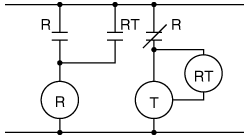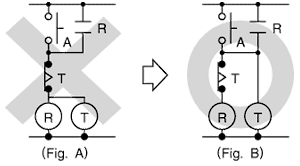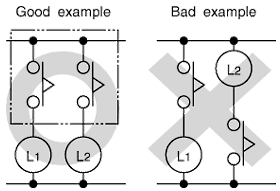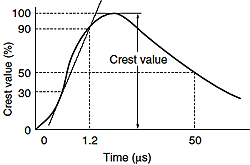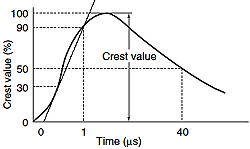[System Maintenance Notice]
Due to ongoing system maintenance, the site search and specification search functions are temporarily unavailable. We apologize for any inconvenience this may cause and appreciate your understanding.
【Notification of Manufacturer Change for Panasonic Industrial Devices SUNX Products and Panasonic Industrial Devices SUNX Tatsuno Products】
From April 1, 2024, the terms "Panasonic Industrial Devices SUNX Co., Ltd." and "Panasonic Industrial Devices SUNX Tatsuno Co., Ltd."
in this page and in the manuals and other documents to be downloaded will all be replaced with "Panasonic Industry Co., Ltd." and applied accordingly.
 Business
> Industrial Devices
> Automation Controls Top
> FA Sensors & Components
> Timers / Counters / FA Componets
> Timers
> S1DXM-A/M Multi-range Timers(Discontinued Products)
> Cautions For Use
Business
> Industrial Devices
> Automation Controls Top
> FA Sensors & Components
> Timers / Counters / FA Componets
> Timers
> S1DXM-A/M Multi-range Timers(Discontinued Products)
> Cautions For Use
S1DXM-A/M Multi-range Timers (Discontinued Products)
|
We are sorry, the products have been discontinued. Please refer to the details of the discontinued products and the recommended substitutes list below.
|
|
Cautions For Use
Timers Cautions for Use (Common for All Models)
Cautions for circuits
1.Protective circuit for timer contact
In the circuit that switches an inductive load, a contact failure may occur at a contact point due to surge or inrush current resulting from that switching.
Therefore, it is recommended that the following protective circuit be used to protect the contact point.
| Circuit | Application | Features/Others | Device Selection | |||
|---|---|---|---|---|---|---|
| AC | DC | |||||
| CR circuit (r: resistor c: capacitor) |
 |
* Note: | Available | If the load is a relay or solenoid, the release time lengthens.Effective when connected to both contacts if the power supply voltage is 24 or 48 V and the voltage across the load is 100 to 200 V. | If the load is a timer, leakage current flows through the CR circuit causing faulty operation. Note: If used with AC voltage, be sure the impedance of the load is sufficiently smaller than that of the CR circuit. |
As a guide in selecting r and c, c: 0.5 to 1 µF per 1 A contact current r: 0.5 to 1 ohm; per 1 V contact voltage Values vary depending on the properties of the load and variations in timer characteristics. Capacitor c acts to suppress the discharge the moment the contacts open. Resistor r acts to limit the current when the power is turned on the next time. Test to confirm. Use a capacitor with a breakdown voltage of 200 to 300 V. Use AC type capacitors (non-polarized) for AC circuits. |
| - | ||||||
 |
Available | Available | ||||
| Diode circuit |  |
N/A | Available |
The diode connected in parallel causes the energy stored in the coil to flow to the coil in the form of current and dissipates it as joule heat at the resistance component of the inductive load. This circuit further delays the release time compared to the CR circuit.(2 to 5 times the release time listed in the catalog) |
Use a diode with a reverse breakdown voltage at least 10 times the circuit voltage and a forward current at least as large as the load current. In electronic circuits where the circuit voltages reverse breakdown voltage of about 2 to 3 times the power supply voltage. |
|
| Varistor circuit |  |
Available | Available | Using the rated voltage characteristics of the varistor, this circuit prevents excessively high voltages from being applied across the contacts. This circuit also slightly delays the release time. Effective when connected to both contacts if the power supply voltage is 24 or 48 V and the voltage across the load is 100 to 200 V. |
- | |
2.Type of Load and Inrush Current
The type of load and its inrush current characteristics, together with the switching frequency are important factors which cause contact welding. Particularly for loads with inrush currents, measure the steady state current and inrush current and use a relay or magnet switch which provides an ample margin of safety. The table below shows the relationship between typical loads and their inrush currents.
| Type of load | Inrush current |
|---|---|
| Resistive load | Steady state current |
| Solenoid load | 10 to 20 times the steady state current |
| Motor load | 5 to 10 times the steady state current |
| Incandescent lamp load | 10 to 15 times the steady state current |
| Mercury lamp load | 1 to 3 times the steady state current |
| Sodium vapor lamp load | 1 to 3 times the steady state current |
| Capacitive load | 20 to 40 times the steady state current |
| Transformer load | 5 to 15 times the steady state current |
When you want large load and long life of the timer, do not control the load direct with a timer. When the timer is designed to use a relay or a magnet switch, you can acquire the longer life of the timer.
3.Connection of input
Since PM4H and LT4H series timers use a transformerless power supply system, the input equipments must have the power supply transformer in which the secondary side is not grounded with the primary and secondary sides insulated, in order to prevent interference of the power supply circuit when connecting the external input circuit as Fig. A.
Be sure not to use an autotransformer. In case of secondary side grounded or using the autotransformer, this product may be destroyed due to short circuit electrically as Fig. B (1 and 2).
In case of F.G. terminal of equipments such a PLC grounded in secondary side of the transformer, inner circuits of this product and the input equipment may be destroyed due to short circuit electrically as Fig.B (3).
Therefore, use the isolated type timers or do not ground F.G. terminal of the products.
|
4.Long Continuous Current Flow
Long continuous current flow through the timer (approx. one month or longer) cause generation of heat internally, which degrade the electronic parts. Use the timer in combination with a relay and avoid long continuous current flow through the timer.
|
|
5.Leakage current
- 1.For connecting and disconnecting operating voltage to the timer, a circuit should be used, which will prevent the flow of leakage current. For example, a circuit for contact protection as shown in Fig A. will permit leakage current flow through R and C, causing erroneous operation of the timer. Instead, the circuit shown in Fig. B should be used.
|
- 2.If the timer is directly switched with a non-contact element, leak current may flow into the timer and cause it to malfunction.
6.Power off time
If the operation voltage for the timer is turned ON after the limit time operation is completed or before the limit time is reached, the Power off time longer than the timer restoration time must be secured.
7.Suicide circuit
If the timer is restored immediately after the specified time is reached, the circuit must be configured so that the restoration time of the timer can be secured sufficiently.
If the power circuit for the timer is turned OFF with the timer contact, a suicide circuit may be configured (Fig. A). In order to settle the problem with this potential suicide circuit, the circuit must be designed so that the timer is turned OFF after the self-retention circuit is completely released (Fig. B).
|
8.Electrical life
The electrical life varies depending on the load type, the switching phase, and the ambient atmosphere. In particular, the following cases require careful attention:
- 1.If an AC load is switched in synchronized phases:Locking or welding is liable to occur due to contact transposition. Check this with the actual system.
- 2.If a load is switched very frequently:
If a load which generates arcs when a contact is switched is turned ON and OFF very frequently, nitrogen and oxygen in air are combined due to arc energy and then HNO3 is produced. This may corrode metallic materials.
The effective countermeasures include:
- 1.Using an arc-extinguishing circuit;
- 2.Decreasing the switching frequency; and
- 3.Decreasing the humidity in the ambient atmosphere.
9.Pin connections
Correctly connect the pins while seeing the pin layout/connection diagram. In particular, the DC type, which has polarities, does not operate with the polarities connected reverse. Any incorrect connection can cause abnormal heating or ignition.
10.Connection to operation power supply
- 1.Supply voltage must be applied at a time through a switch, a relay, and other parts. If the voltage is applied gradually, the specified time may be reached regardless of its value or the power supply may not be reset.
- 2.The operation voltage for the DC type must be at the specified ripple percentage or less. The average voltage must fall within the allowable operation voltage range.
- 3.Make sure that no induced voltage and residual voltage are applied between the power pins on the timer after the power switch is turned OFF.
| Rectification type | Ripple percentage |
|---|---|
| Single-phase, full-wave | Approx. 48% |
| Three-phase, full-wave | Approx. 4% |
| Three-phase, half-wave | Approx. 17% |
11.Control output
- 1.The load for the control output must be used within the load capacity specified in the rated control capacity. If it is used exceeding the rated value, the life is greatly shortened.
- 2.The following connection might result in short circuit between the heteropolar contacts in the timer.
|
12.Installing the timer
- 1.To install the timer, use the dedicated pin bracket or socket (cap). Avoid connecting the pins on the timer by directly soldering them.
- 2.In order to maintain the characteristics, do not remove the timer cover (case).
13.Superimposed surge of power supply
For the superimposed surge of power supply, the standard waveform (±1.2×50μs or ±1×40μs) is taken as the standard value for surge-proof voltage.
(The positive and negative voltages are applied each three or five times between the power pins.)
For the standard values for the PM4H, LT4H, and S1DX type timers, see the respective items in "Caution on usage."
|
|
PMH [±(1×40)μs]
| Voltage type | Surge voltage |
|---|---|
| AC type (except 24V AC) | 4,000V |
| 12V, 24V DC, 24V AC | 500V |
Other timers [±(1×40)μs]
| Type | Surge voltage |
|---|---|
| PNS CN-C CHP, CHP-F | 20 times rated voltage |
| CHP-SD | 4,000V |
If external surge occurs exceeding the specified value, the internal circuit may break down. In this case, use a surge absorption element. The typical surge absorption elements include a varistor, a capacitor, and a diode. If a surge absorption element is used, use an oscilloscope to see whether or not the foreign surge exceeding the specified value appears.
14.Changing the set time
Do not change the set time when the limit time operation is in progress.
However, this is possible only with the motor-driven type timer if the set time is shorter than the remaining time. For changing the set time on the digital timer (LT4H), see the relevant item in "Caution on use."
15.Operating environment
- 1.Use the timer within the ambient temperature range from -10°C to +50°C/ +14°F to +122°F (+55°C/ +131°F for the LT4H series) and at ambient humidity of 85% RH maximum.
- 2.Avoid using the timer in a location where (a) inflammable or corrosive gas is generated, (b) the timer is exposed to much dust and other foreign matter; (c) water or oil is splashed on the timer; or (d) vibrations or shocks are given to the timer.
- 3.The timer cover (case), the knobs, and the dials are made of polycarbonated resin. Therefore, prevent the timer from being exposed to organic solvents such as methyl alcohol, benzine, and thinner, strong acid substances such as caustic soda, and ammonia and avoid using the timer in atmosphere containing any of those substances.
- 4.If the timer is used where noises are emitted frequently, separate the input signal elements (such as a sensor), the wiring for the input signal line, and the timer as far as possible from the noise source and the high power line containing noises.
16.Checking the actual load
In order to increase the reliability in the actual use, check the quality of the timer in the actual usage.
17.Others
- 1. If the timer is used exceeding the ratings (operation voltage and control capacity), the contact life, or any other specified limit, abnormal heat, smoke, or ignition may occur.
- 2. If any malfunction of the timer is likely to affect human life and properties, give allowance to the rated values and performance values. In addition, take appropriate safety measures such as a duplex circuit from the viewpoint of product liabilities.
S1DXM-A/M Multi-range Timers Cautions For Use
1.Reset periods
After unscheduled operations have been completed, or if the timer operation power supply has been turned off at any time during operation, a reset period of at least 0.1 seconds should be allowed before resuming operation.2.External surge protection
External surge protection may be required if the following values are exceeded. Otherwise, the internal circuit will be damaged. The typical surge absorption elements include a varistor, a capacitor, and a diode. If a surge absorption element is used, use an oscilloscope to see whether or not the foreign surge exceeding the specified value appears.
|
| Operation voltage | Surge voltage |
|---|---|
| 100 to 120V AC, 200 to 220V AC | 4,000V |
| 12V DC, 24V DC | 1,000V |
Since the main body cover and knob are made of polycarbonate resin, prevent contact with organic solvents such as methyl alcohol, benzine and thinner, or strong alkali materials such as ammonia and caustic soda.
3.Terminal wiring
Make sure that terminals are wired carefully and correctly, referring to the terminal layout and wiring diagrams.Particularly, since the DC type has polarity, do not operate it with reverse polarity.4.Assembly
- 1.When installing, use a terminal socket or socket intended for the HC/HJ relay.For adjacent installations, be sure to first verify the installation conditions of the terminal sockets or sockets you will be using.
- 2.Use the separately-sold dedicated socket leaf holding clip to secure terminal sockets and sockets to the timer unit. The conditions of use for dedicated socket leaf holding clip will differ depending on the terminal socket or socket you will be using. Therefore, please test under actual conditions before putting into operation.
- 3.If terminals are to be soldered directly,please hand solder with a 30 to 60 W solder iron with a tip temperature of 300°C for no more than 3 seconds.Automatic soldering should be avoided.
- 4.A flux-tight construction is not used with this timer, so be careful that flux or cleaning fluid does not get inside the case.
- 5.To assure that characteristics are maintained, do not remove the case.
5.Long Continuous Current Flow
|
6.Phase synchronization using AC load
If the turning on of the timer output relay is synchronized to the AC power supply phase, there may be times when the service life is shortened because of electrical factors, or when a locking phenomenon (defective relay return) occurs because of contact point welding or a shift in the contact relay. Check the operation using the actual timer.7.Acquisition of CE marking
Please abide by the conditions below when using in applications that comply with EN61812-1.
- 1.Overvoltage category II,pollution level 2 (2 Form C type)
- 2.The load connected to the output contact should have basic insulation.This timer is protected with basic insulation and can be double-insulated to meet EN/IEC requirements by using basic insulation on the load.
- 3.Please use a power supply that is protected by an overcurrent protection device which complies with the EN/IEC standard (example: 250 V 1 A fuse, etc.).
- 4.You must use a terminal socket or socket for the installation.Do not touch the terminals or other parts of the timer when it is powered.When installing or un-installing, make sure that no voltage is being applied to any of the terminals.
- 5.Do not use this timer as a safety circuit.For example when using a timer in a heater circuit, etc.,provide a protection circuit on the machine side.
8.Others
- 1.When setting the time, the dial should be kept within the range indicated on the dial face. The “0” marking on the dial indicates the minimum time during which the control time can be varied (it does not indicate 0 seconds).
- 2.Do not rotate the knob past the stopper.
- 3.Turn off the power before changing the DIP switch settings. Changing the DIP switch with the power on can cause breakdown.
- 4.When connecting the operating power supply, make sure that no leakage current enters the timer. For example,when performing contact protection, if set up like that of fig. A, leaking current will pass through C and R, enter the timer,and cause incorrect operation. The fig. B shows the correct setup.
|
|
BY EMAIL
- U.S.A.
- +1-800-344-2112
- Europe
- +49-89-45354-1000
- China
- +86-10-59255988
- Singapore
- +65-6299-9181
Requests to customers (Automation Control Components & Industrial Device) [Excluding specific product]
Requests to customers (Automation Control Components & Industrial Device) [For specific product]
Requests to customers (FA Sensors & Components [Excluding motors])
Requests to customers (Dedicated to industrial motors)
- COMPONENTS & DEVICES
- FA SENSORS & COMPONENTS
- Fiber Sensors
- Photoelectric Sensors / Laser Sensors
- Micro Photoelectric Sensors
- Light Curtains / Safety Components
- Area Sensors
- Inductive Proximity Sensors
- Particular Use Sensors
- Sensor Options
- Wire-Saving Systems
- Programmable Controllers / Interface Terminal
- Human Machine Interface
- Pressure Sensors / Flow Sensors
- Measurement Sensors
- Static Control Devices
- Laser Markers / 2D Code Readers
- Machine Vision System
- Energy Management Solutions
- Timers / Counters / FA Components
- MOTORS





